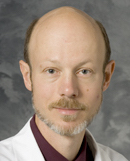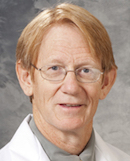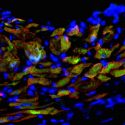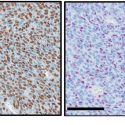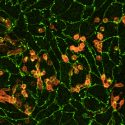Stem cell ‘heart patch’ moves closer to clinic
The promise of stem cells to treat cardiovascular disease may soon be a step closer to clinical application as scientists from three institutions seek to perfect and test three-dimensional “heart patches” in a large animal model — the last big hurdle before trials in human patients.
In theory, the heart patches, engineered tissue composed of the several different types of cells that make up heart muscle, would be implanted to replace diseased or damaged tissue and would perform all the functions of healthy, beating heart muscle.
Using stem cells to treat cardiovascular disease is a grail of regenerative medicine, explains Timothy J. Kamp, a University of Wisconsin–Madison cardiologist and co-director of the UW–Madison Stem Cell and Regenerative Medicine Center. Treating diseased hearts by implanting healthy, lab-grown cells to replace damaged tissue has been an aspiration of stem cell biologists since all-purpose human stem cells were first derived and cultured at UW–Madison in 1998.
Working with teams from the University of Alabama at Birmingham and Duke University in a newly funded $8.6 million consortium, Kamp and his colleagues will seek to devise and seed with the appropriate mix of cells three-dimensional patches that will be used in a pig model, a close approximation in an animal to the human heart. The seven-year study is being funded by the National Institutes of Health.
“The excitement here is we’re moving closer to patient applications,” says Kamp, a professor in the UW School of Medicine and Public Health (SMPH). “We’re at a stage when we need to see how these cells do in a large animal heart attack model. We’ll be making patches of heart muscle that can be applied to these injured areas.”
Other types of cells have been tried for cardiac repair with limited success, Kamp notes, but the advent of embryonic and induced stem cell technologies brings a new precision to the problem: the ability to make in the lab all of the specific cell types that make up heart muscle and that could be more personalized to individual patients.
Cardiomyocytes, the beating workhorse cells of the heart, along with endothelial cells and fibroblasts, will be built into a three-dimensional heart patch for testing in a large animal heart attack model. The effort to move stem cell technology for treating heart disease closer to the clinic is being undertaken by researchers at the University of Alabama at Birmingham and Duke University and was recently funded by the National Institutes of Health. Video courtesy of Xiaojun Lian.
To achieve that and to begin to lay out a game plan for how the technology can ultimately be applied to human patients, there are a number of big hurdles Kamp and his collaborators will need to overcome. The first challenge is to create in the lab the primary cell types that compose heart tissue: cardiomyocytes, the cells responsible for muscle contraction; fibroblasts, the cells that provide structural framework to tissue; and endothelial cells, the cells that line blood vessels.
Kamp’s group previously has devised techniques for spinning fibroblasts in mice into progenitor master heart cells, cells capable of differentiating into all the different types of cells that make up heart muscle. Applied to human cells, the technology could provide a foundation for mass producing heart cells for clinical use in the laboratory.
Another key obstacle, Kamp notes, is making cells that, when transplanted, do not prompt an immune response by a new host. “The body’s immune response is a big part of this,” he says.
“The excitement here is we’re moving closer to patient applications.”
Timothy J. Kamp
To test immune reaction to implanted cells, Kamp and his colleague, William Burlingham, from the SMPH’s Department of Surgery, will first transplant lab-made cells into mice engineered to have a human immune system. Ideally, cells can be made to at least partially match the human immune response, which might open the door to creating cells that do not need to be individually matched to a patient. Such technologies already exist for many solid organ transplants.
In addition to creating the right mix of cells that aren’t rejected by a host, Kamp and his colleagues must forge cells that beat in rhythm with the new host: “Another barrier we are particularly concerned about is triggering arrhythmias,” says Kamp. “Will putting these cells in create a life-threatening ventricular arrhythmia? That is one of the risks that we need to overcome.”
Finally, the UAB-Duke-Wisconsin group must devise a heart patch in a way that it can effectively integrate into the heart of a patient. The technology is not at all like “plugging in a USB drive,” says Kamp.
Building the heart patch technology and testing it in a large animal model, Kamp says, will go a long way toward harnessing the potential of stem cells to treat heart disease, which in many respects is still unproven.
“The proposed studies in animal models are essential to develop this novel therapy,” Kamp says, “but the gold standard, of course, is a human patient.”

